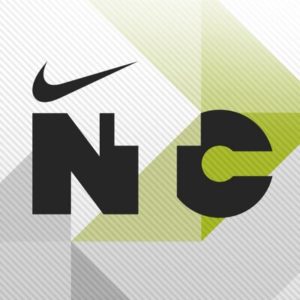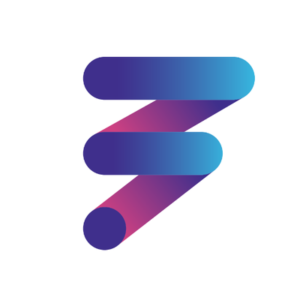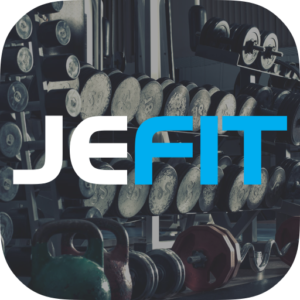Workout apps provide workouts, fitness tips, and exercise tutorials right on your phone. There are all sorts of workout apps out there, with different features and different levels of difficulty.
We reviewed some of the best workout apps currently available for Android and iOS. Here are some of our favorites:
1. Fitbit Coach

The Fitbit Coach app is designed to work alongside your Fitbit tracker. However, even if you don’t have one of these trackers, the app can still be handy. The app provides dynamic exercise suggestions tailored to your past exercises and your goals.
This app provides hundreds of routines, so you’ll never get bored. For these reasons, it is FitBug’s #1 tip.
2. PEAR Personal Fitness Coach

This app provides a free option for those who aren’t ready to take the plunge with a paid app. It provides eyes-free and hands-free audio coaching that can lead you through a variety of workouts.
There are routine options for every fitness level. Each workout automatically adapts based on your performance.
3. Peloton Digital

The Peloton app is a cheaper option, but it isn’t free. While Peloton is best known for its fancy bike, their app can be used with whatever you happen to have in your home.
It features classes that range from running to cycling to strength to yoga, so you’ll find everything you need.
4. Nike Training Club

Offering a vast workout library, this app provides guided workouts to help you meet your specific goals. It includes routines that require equipment, those that just require bodyweight, and everything in between.
There is a premium tier that offers nutrition and wellness advice, but you can get a lot out of the free version.
5. Workout Trainer

This app caters to those of all experiences. In the beginning, you’ll fill out a simple questionnaire to help measure your physical fitness goals. This allows the app to recommend workout plans and exercises.
Workout Trainer can send you reminders to workouts and keep up with stat tracking to help you stay focused.
6. FitOn

This app aims to be a Netflix-style service of workout videos. There are tons of different recorded classes from many different training techniques. All videos come with full voice and video instructions. You can even find videos facilitated by celebrity trainers.
Currently, the app is entirely free.
7. JEFIT

JEFIT is mostly aimed at those who do weight training and bodybuilding. This makes it a very niche app, but it is an excellent option if you’re mostly focused on strength training.
It comes with a workout planner, exercise log, progress tracker, and more. There is a free version and a pro version with more features.
8. The Be.come Project

The Be.come Project is more motivational and body neutral than other fitness apps. Each week, the coach provides a new guided workout for you to try. The workouts are a blend of yoga and Pilates, with some fitness dancing thrown in.
This app is best for those who are interested in a low-pressure system.
9. Aaptive

This app provides thousands of workout videos in a variety of styles and goals. You can find everything from HIIT videos to marathon training.
You can also download the workouts straight to your phone so that you can use them offline. Some workouts are adaptable, depending on the intensity you’re looking for.
10. Daily Burn

If you like group classes, Daily Burn is a good option. It provides live daily workouts that you can stream, as well as offline videos you can take advantage of.
It is very beginner-friendly and includes specialized videos, like yoga and strength training.
How We Ranked
For this article, we only focused on apps that provided recorded workout videos or similar features. There are some other apps out there that could be described as “workout apps,” such as workout music apps, for instance. However, we didn’t think these were as useful to our readers as apps with complete workout videos and programs.
With that said, we first looked at the overall value of the app. Some apps are entirely free and long free trial options for most users, such as PEAR Personal Fitness Coach. Others cost money but are quite inexpensive for the features they offer. We didn’t necessarily consider the exact price of the app in our ratings, but we did take into account whether the price was worth it.
Some subscription apps did not include any more features than some of the free apps did. In these cases, we didn’t add these apps to our list, because there were better, free options our readers could download instead.
Secondly, we considered the quality and variety of each app’s workout video. Many of these apps are very similar in their design and implementation. The only significant difference is often the quality of their videos and the sorts of videos they offer. Generally, the more videos an app has, the better. More videos mean that you won’t be getting bored anytime soon and that the app is going to be useful for a wider variety of people. The same can be said for the number of techniques the app features.
Thirdly, we factored in how easy each app was to use. This is where many of our top contenders shinned. We particularly prized apps that had easy-to-find videos and a great search system. Extra features, like the ability to save videos for later, also gave each app a few extra bumps in the rankings.
Even if an app has tons of videos, it isn’t going to do you much good if you can’t find them.
We also took into account how often the app crashed and how often users encountered bugs. Some apps were incredibly buggy, so we didn’t include them in our listing.
Fourthly, we considered how high-quality the personalization on the app was. Most apps provided personalization of some sort, but they pulled it off in different ways. Many apps simply had their user fill out a form when they first signed up and used their answers to recommend videos. Others went all-out, with personalized videos, goal tracking, and other features. More personalization is usually better, so we ranked apps higher when they provided more of it.
Finally, we considered how much “gamification” the app provided. Gamification is not always necessary, but it can make you more likely to use the app, which is always a good thing. Gamification comes in many different ways, but usually, apps have points you can earn or goals for you to reach for. Some apps even provided a “level up” feature.
Benefits
Workout apps can prevent certain diseases and conditions. There are many different diseases related to not exercising enough. Obesity is probably one of the most common and well-known conditions you can get with improper exercise and is itself associated with a large variety of different conditions and complications.
However, on top of obesity and everything that comes with that, not getting enough exercise is associated with heart disease and cancer (1). Furthermore, exercise can also help you control your blood pressure (2). Uncontrolled blood pressure is linked with kidney problems and dementia (3).
Working out regularly is essential for your overall health. A workout app can help you work out more often and do a broader range of workouts. Most apps include everything from yoga to strength training, so you’re more likely to find something you like. These apps are also more accessible since you can use them anywhere and don’t have to pay a gym fee.
Workout apps can help you maintain a minimum amount of exercise. There is a minimum amount of exercise everyone should be getting every day. According to one study, you should moderately workout for 15-minutes every day, at least. Preferably, this should add up to a minimum of 90 minutes a week. Those who performed at least this much exercise had a 14% lower chance of dying and increased their life expectancy to an average of 3-years (4).
Working out this much can be difficult, however. Many parts of modern life can get in the way of a good workout – even one that is just 15 minutes long. Using a workout app can make it much more accessible, though. When you have complete workout videos in your pocket, there is no excuse not to take a quick workout break.
Workout apps are accessible to beginners. It can be overwhelming to walk into a class for the first time. You don’t know what to expect and probably don’t know many people in the class either. If you’re introverted, you might avoid group classes altogether for these very reasons.
Luckily, workout apps are much more accessible for beginners. They allow you to pause and rewind a video if you need to see the exercise explained again, and you can take as many breaks as you need. Most videos also have someone on screen doing a modified version of the workout, while this is not always true for live workout classes.
No one is watching you when you workout at home using an app, so you can feel free to try new styles and make mistakes. There are some apps with a social component, but there is no reason to use these if you don’t want to.
Plus, workout apps are often packed full of beginner-friendly videos and programs.
Workout apps provide goals. Goals can be a massive motivator for sticking with a workout plan. One study found that those who had a goal were significantly more likely to stick with their workout than those who had no goal (5).
This makes sense from a scientific perspective: if you have a goal, it is much easier to see your progress towards that goal. Easily trackable goals, like finishing a program or performing 60 pushups, are an easy way to mark your progress. This is especially important because it is often difficult to see your progress when you’re working out. Progress is often relatively slow, which doesn’t do much to motivate you.
Luckily, most workout apps come with goals built-in. Many allow you to customize your goals and then measure them for you, which can increase your overall motivation.
Workout apps use gamification. “Gamification” is a term that refers to game-like features, such as leveling up and gaining points. These features have an impact on our brains because they involve instant gratification. You fought this dragon, gain XP, and then you level up. This is one of the reasons video games are so popular.
Many workout apps know that our brains love gamification and include similar features in the app. For example, you might have a step meter that fills up the more steps you take, or you may earn points for performing specific actions. Some apps even let you “level-up” and compete with your friends.
While gamification makes apps more fun, studies also show that it makes it more likely for you to stick to the workouts (6). Almost all apps include gamification of some sort, though some apps include more gamified features than others.
Workout apps can keep up with your stats. Most workout apps keep up with your stats, such as how long you’ve worked out, what your current streak is, and how many steps you’ve taken. This information is useful because it provides instant gratification and helps you work towards goals, which we have already discussed above. However, it is also useful for a variety of other reasons.
If you know exactly how long you’ve worked out and what your most common workouts are, it makes it easier to tweak your program to help reach your goals. It is difficult to change anything if you aren’t sure what you’re doing in the first place. This is one area where workout apps shine. Many will even make suggestions based on your data, so you don’t even have to go about tweaking the program yourself.
Research has shown that when users have access to their workout information, they’re more likely to lose weight (7). More information is never a bad thing.
Side Effects
Workout apps aren’t right for everyone. Workout apps are, by their nature, often used without social interaction. This can be a problem for people who are most socially motivated.
Furthermore, studies have found that the usefulness of workout apps might be different depending on gender (8). It seems like the workout motivation is often different according to your gender. In general, women say they exercise to “control weight,” while men often exercise for a different reason (9). As you can guess, not every app is going to be suitable for you, depending on your motivation.
Workout apps aren’t always high-quality. When it comes to workout apps, you often get what you pay for. Premium apps, like Fitbit Coach, often has better features than free apps. While there are many free apps out there, the vast majority of them are not high-quality. Of course, there are exceptions, like the PEAR Personal Fitness Coach.
One study reviewed the current free workout apps available and found that the depressingly vast majority of them were not very good quality. Hardly any of them are based on scientific guidelines of any sort (9). The study reports that there is a clear gap between current scientific research and the workout app market.
Workout apps don’t replace doctors. No matter how much health information a workout app might offer, they do not replace doctors. Scientific studies have recommended doctors refrain from recommending apps that provide health information because this information is not always correct and can cause confusion (10).
You should speak with your doctor before making any significant changes to your workout plan, especially if you have certain health conditions that might be affected, like arthritis. Working out is rarely a bad thing, but there is a right way to go about it. If you have certain conditions, you may have to avoid specific techniques and exercises.
Workout apps can be overused. Increasing the amount you move is a good idea for the vast majority of the population. However, you can overuse a workout app and workout too much. Several health effects can occur from over-exercise.
For example, some heart problems are associated with too much exercise. This likely happens when your heart rate stays unreasonably high for too long and is most associated with runners (11). You’re more likely to get injured if you work out too much and overwork already sore muscles (12).
These problems are often associated with professional athletes, but they can affect anyone. Don’t feel like you have to do everything on your workout app all the time. Don’t forget to give your body regular breaks and diversify the type of workouts you do to prevent injury.
Recommended Usage
There is a fine line between working out enough and working out too much. The most important thing to keep in mind when using a workout app is to listen to your body. Your chance of injury does go up if your body is sore and overworked. For this reason, you must listen to what your body is telling you and take breaks as necessary.
It is also essential to diversify your workout. Even if you want super-strong abs, don’t work them out every day. Similarly, you don’t want to do strength training every day, even if you’re switching between different muscle groups.
Generally, it is much harder to overdo specific exercise techniques, like yin yoga. These sorts of exercises can be done every day or on your rest days.
With that said, you do want to use the app enough to get the benefits from exercising. This means using it for at least a little bit each day. As we have seen, the minimum recommended amount of moderate exercise is about 15 minutes a day, so ensure that you’re getting at least that.
Switch up the sort of exercising you’re doing to achieve that 15 minutes for a well-rounded workout.
Set personal goals on your chosen workout app, if possible, to mirror these suggestions. That way, you have a visual reminder of how much work you should be using.
FAQ
What is the best workout app? We recommend the Fitbit Coach app for nearly all users. While this app does sync with Fitbit devices, it is suitable for those without a wearable tracker as well. This app includes many different workouts and programs designed for all sorts of levels and abilities. All workouts are personalized, though many of these options rely on Fitbit trackers.
Currently, the app has a surprisingly high number of workouts, with more being added all the time. Workouts vary by length, intensity, style, and difficulty, so there is pretty much something for everyone. Plus, the premium version of this app is pretty cheap when compared to other options. It is an exceptional value.
What is the best free workout app? For those who are set on not spending any money, we recommend the PEAR Personal Fitness Coach. This app does include in-app purchases, but you can get quite a bit out of it for free, especially with their free trial. It features hundreds of workouts from a massive variety of genres, including HIIT, treadmill, yoga, and strength exercises. Each workout video is adaptive, which means it can change based on your performance. The aim is for you to work smarter, not harder.
The app also comes with a free premium trial for 30-days, which is one of the longest trials on the market.
Which app is best for home workout? If you work out almost exclusively at home, we recommend the Fitbit Coach app. The best part about this app is that it can track your movements through a Fitbit fitness tracker, allowing the app to provide real-time advice based on your performance. This gives you the same benefits as taking a class at a gym or having a personal trainer – you’re able to correct your workout to get the most benefits.
Furthermore, this is just a great, all-around app. It has tons of videos and features a variety of different exercise styles. It is suitable for both newbies and seasoned veterans due to the extensive workout library. There are also set programs and courses you can follow if you need a little bit more guidance.
Is a 7-minute workout on a workout app effective? It depends on what you do during those seven minutes and what you’re trying to achieve. Many apps will provide concise workouts. However, you’re going to accomplish different things with short workouts than you are longer workouts. Specific strength exercises take a certain amount of time. You can’t speed them up without losing proper form and potentially hurting yourself.
Because of this, short workouts have to use easy, fast exercises – like pushups. Shorter exercises are also often cardio-intense since they aim to get lots done in a short period. This can be effective for getting a quick cardio workout in but isn’t going to be helpful if you’re just trying to focus on strength.
Furthermore, it is recommended that you exercise for at least 15 minutes a day. If you just do a seven-minute workout, you are not going to reach that minimum amount.
What is a good beginner workout app? Most of the apps in our rankings section are suitable for beginners. This includes Fitbit Coach and Peloton Digital. Companies know that people of varying skills are going to be using their app, so they typically provide a wide range of workout videos.
Both Fitbit Coach and Peloton Digital provide beginner-friendly videos, as well as options for more advanced users. Both offer a “level” system, though each system works a little differently. These levels help you select a workout that is best for you or helps the app customize an exercise routine to fit you better – as is the case with Fitbit Coach.
Which app is best for gym workout? If you’re working out at the gym, we recommend the Peloton Digital app. This app provides lots of videos that use machines you’d usually find at a gym. This allows you to take advantage of what your gym offers and use the machines to their fullest. There are videos for those of all different levels, so there is a little something for everyone.
If your gym has Peloton machines, we particularly recommend this app. However, you do not need a Peloton machine by any means to use this app.
Will a workout app help me get a flat tummy? This depends on what exercises you’re doing on the app. Core workouts are pretty popular, so almost every app available will have something for your core. Pilates, in particular, is suitable for your core, since it focuses a lot on controlling your abs and pelvic floor muscles. However, many different workouts are suitable.
In general, if it hurts your abs, the exercises are using your abs, which is what you want if you’re trying to get a flat stomach.
It is important to remember to diversify your workouts, even if you mostly just want a flat stomach. You should not do abs every day. Don’t forget to work those legs and arms too.
Do workout apps work? All workout apps have videos that should improve your fitness level, assuming the workouts provided are challenging enough. Most do “work” to that extent. However, your fitness level will only increase if you workout regularly and at a level correct for you.
A lot of your success hinges on you, even with a great workout app.
Do workout apps track your workout? Most workout apps do have a variety of tracking features. While you’re doing the workout, you are following along with a video. On top of this, though, many also allow you to track your progress over time and set goals. Most also have some sort of video-saving function, that allows you to favorite or save videos for later.
Is there a free workout app? There are quite a few free workouts apps. Nearly any app you download is going to have a free trial, even if the app itself isn’t free. The PEAR Personal Fitness Coach is free, though there are in-app purchases that can add up over time. This app features everything from running to yoga to strength training. We particularly like this app because it is straightforward for beginners to jump into.
Currently, FitOn is entirely free, though this was not the case in the past. This app is Netflix-style, but with workout videos instead of movies and TV shows. There are videos from many different trainers, and nearly every sort of exercise style is featured. We don’t know when it will begin costing money again, though, so jump on it as soon as you can to take advantage of it being free.
How much do you need to use a workout app to see results? When you’re doing any sort of workout, little and often is critical. You don’t want to overdo yourself by suddenly running five-miles each day, but you do want to have a stable routine. Preferably, you should workout at least 15 minutes at a time. However, up to an hour a day can be useful, depending on what you’re doing. Some exercises are going to be longer than others naturally. Weight-lifting exercise videos are often going to be longer than Pilates, for example.
Just using the app for a short period each day will quickly produce results. However, it is essential to remember that all progress with fitness-related activities is generally pretty slow. It will take weeks before you see a noticeable difference in most cases.
Why am I gaining weight while using a workout app? There are a few different reasons why you could be gaining weight while working out with an app. Firstly, the more you exercise, the more muscles your body is going to build. Muscle weighs more than fat. You could very well be losing fat, but gaining muscle – causing the scale to show higher numbers.
Furthermore, if you’re very new to working out, your body could be preparing for your workouts by building up water weight. Your body uses a lot of what while you’re working out. If your body isn’t used to this, it will try to store water “just in case.” Water weighs quite a bit and can make your weight increase, even though you haven’t gained any more weight.
Finally, by using your muscles, you are creating micro-tears and inflammation. This is a good sign because your muscles will prepare themselves and be even stronger. However, this can also make your body hold onto water, which can make your weight go up temporarily.
In any case, you should stick with your routine, since all of these potential causes will go away by themselves as you continue. You may want to stay off the scale for a bit if it’s bothering you.
Can I use a workout app every day? Yes. As long as you’re not doing the same thing day after day. You don’t want to exercise your arms every day or even do strength training every day. Instead, diversify your workout to give your body a chance to rest. You can do strength training one day and then yoga the next, for example. This will keep you active without overusing one part of your body.
Why does my stomach look bigger after using a workout app? This is likely because whatever workout you did on the app used your abs. They will stay tense for a bit after your workout, which can make your stomach look more prominent. Furthermore, when you exercise your abs, you’re also causing tiny tears, which will cause inflammation. This inflammation can make your stomach look more significant for a day or two while your abs are repaired.
However, this is no reason to stop using the app. Over time, the effects will become less noticeable. Furthermore, you will use belly fat, which will make your belly appear smaller overall.
Related Articles
Recap
Workout apps can be useful for those who work out at home or who want to take their workouts to the next level. They’re often cheaper and more personalize than going to gym classes or hiring a personal trainer. Plus, you can use them anywhere at any time. There are many different workout apps out there, and many feature exercise videos in many different styles for many different levels.
For FitBug’s #1 workout app, click here.